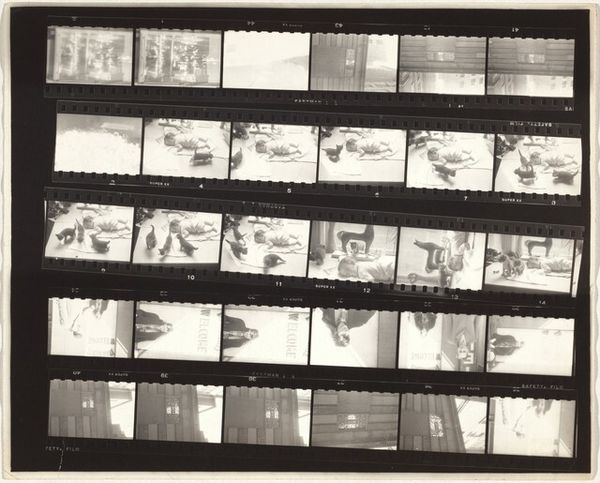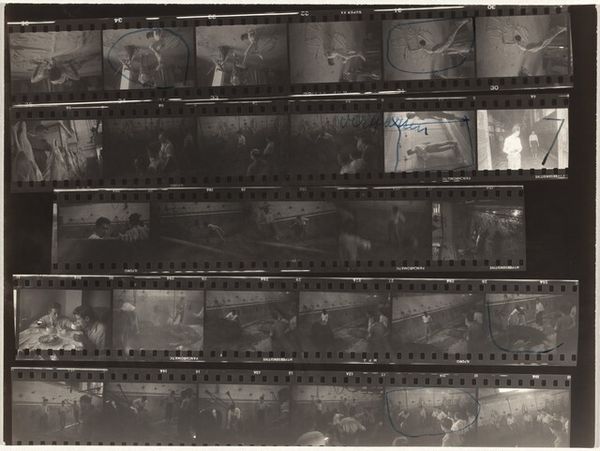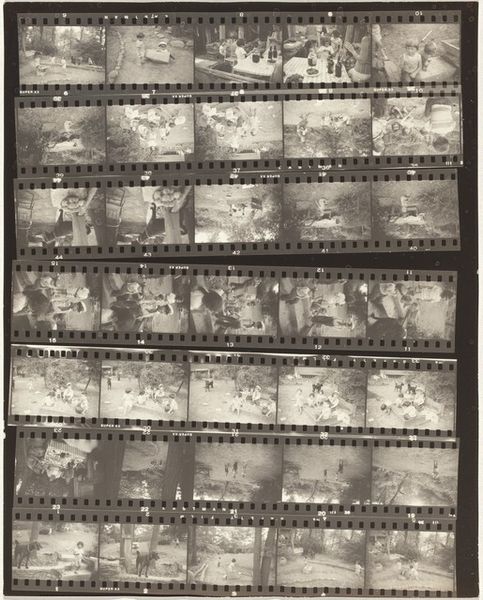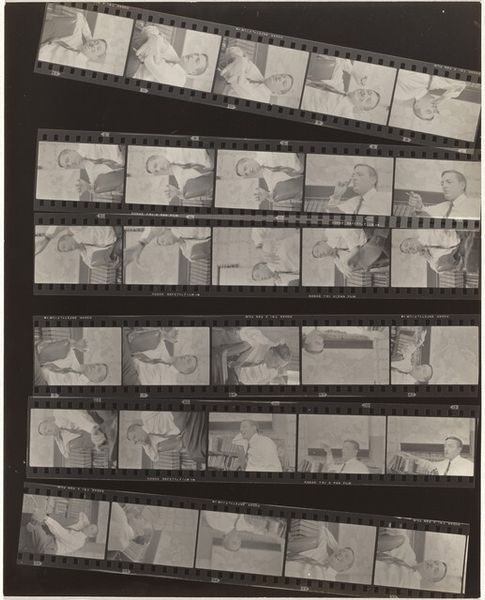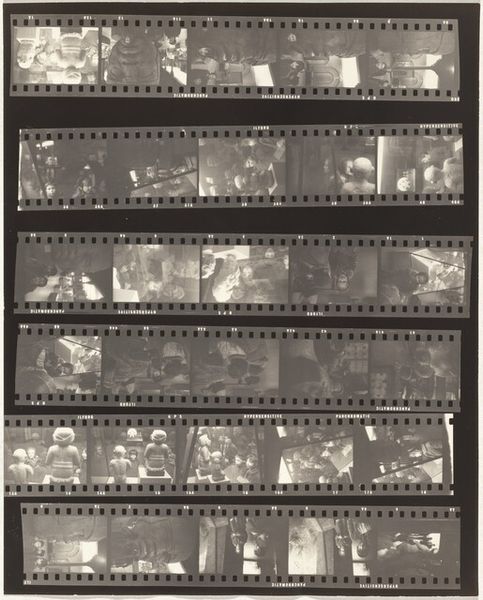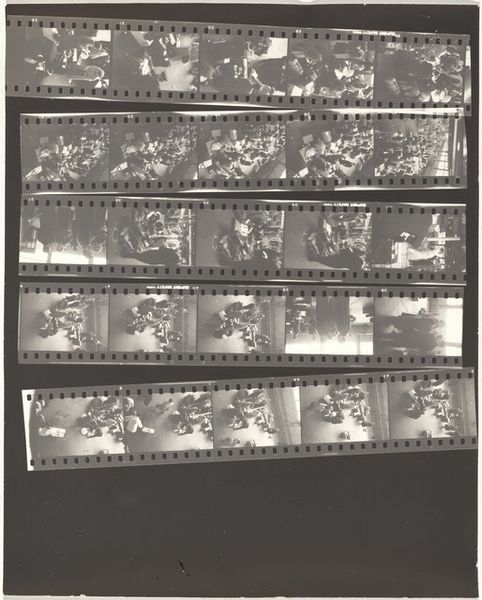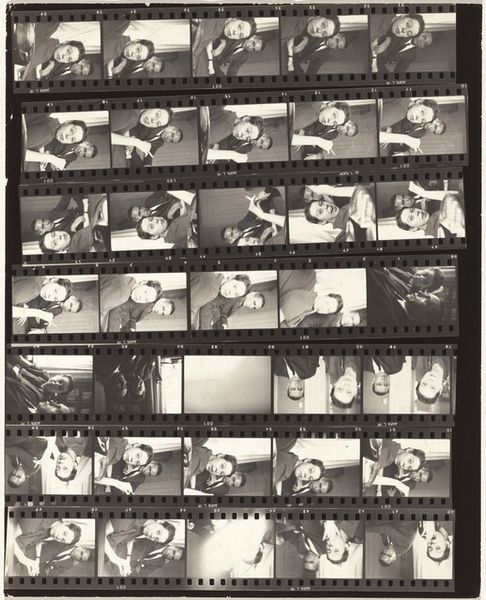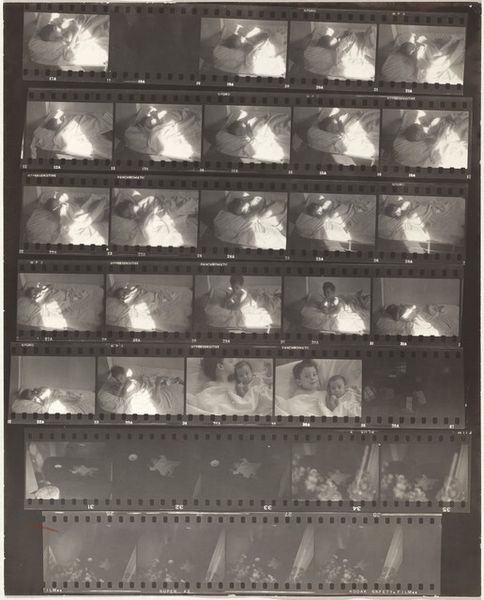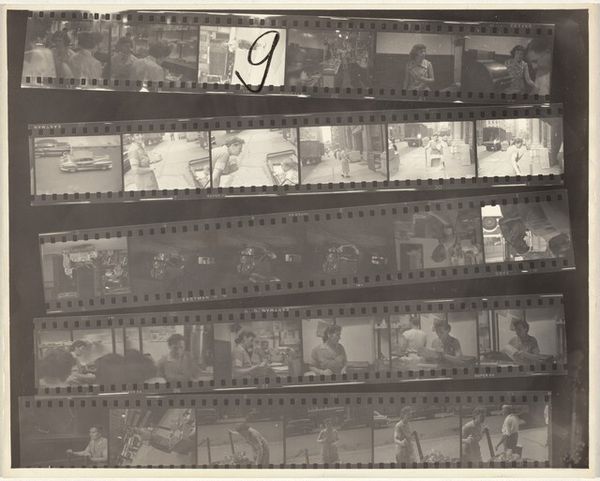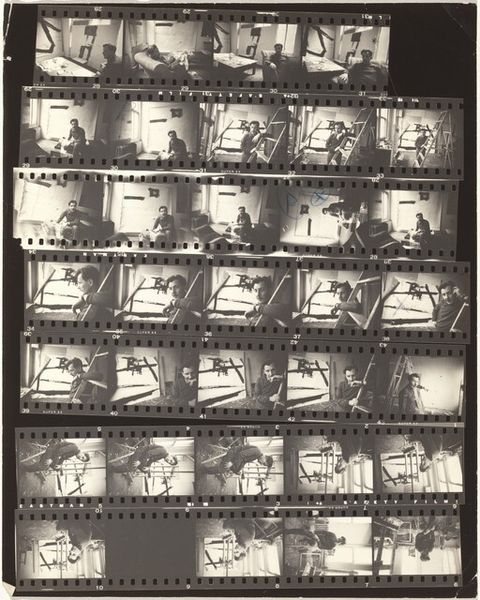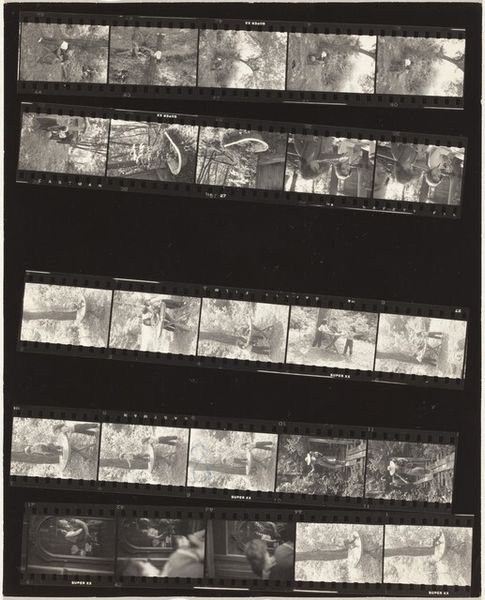
photography, gelatin-silver-print
#
portrait
#
still-life-photography
#
street-photography
#
photography
#
gelatin-silver-print
#
realism
Dimensions: overall: 20.2 x 25.2 cm (7 15/16 x 9 15/16 in.)
Copyright: National Gallery of Art: CC0 1.0
Curator: This is a fascinating work by Robert Frank, "Mary with cats--Children and family no number," likely taken around 1949 or 1950. It's a gelatin silver print, presented as a contact sheet. Editor: My immediate impression is one of intimacy, but also of process. The whole thing feels like an open window into the photographer's working method – a raw look behind the scenes of image making. Curator: Indeed. The contact sheet format underscores Frank's street photography ethos, a departure from highly staged studio portraiture. It highlights a realism deeply rooted in the everyday lives of ordinary people, especially post-war. Editor: The materials also play a role here. Gelatin silver prints were ubiquitous, affordable, reflecting a democratic approach to art making, right? Frank is using fairly available technology to document a very specific social reality. There’s no preciousness. Curator: Precisely. It connects to the broader discussions around documentary photography. This contact sheet showcases many angles. Frank, with an intention, carefully decides to create a story based on his selection, editing, and ordering choices to convey his message. Editor: The repetition across the sheet really drives home that selection process. You see Frank adjusting and tweaking in real time. Curator: Frank challenges conventions. The photo contains not only pictures with "Mary", but others with plants, other children, landscapes and random people, almost giving this Mary's character less meaning than previously anticipated. What does Mary stand for? Editor: Perhaps it’s the blurring of boundaries that gives it power. Art and life aren’t separate domains, but intimately linked processes, something he explores further later on with "The Americans," blurring these genres even further, and questioning photography’s "authority." Curator: Absolutely. It's about the relationships—family, society—and how photography can reveal both the beauty and the mundane nature within. The "Family" theme is the great addition here. Editor: Seeing this contact sheet provides this layer. To me, its process becomes inseparable from the images’ potential emotional impact. It adds another layer of accessibility. Curator: An intimate view of the choices and cultural moment it exists within. It’s great to consider the implications. Editor: Indeed, a compelling case study in photographic craft, choices and social commentary all rolled into one imperfect and very human package.
Comments
No comments
Be the first to comment and join the conversation on the ultimate creative platform.
